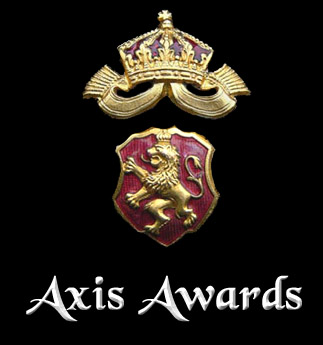
The Axis Nations were as follows:
Major Axis Powers



Minor Axis Powers






Bulgaria
First pattern, pre-WW2, pilot qualification badges in gold and silver of the illegally reformed Bulgarian Air Force. Technically they are referred to as 'Flyers of Tourist Aircraft' but were, in fact, training in military aircraft.
They were awarded at a time when Bulgaria was prevented by the Treaty of Versailles from having a military air force. The silver badge was given to the more senior pilots. Both badges were frequently awarded to Luftwaffe pilots.

German made (screwback) Bulgarian 1st pattern Pilot's Badge (Gold) attributed to the firm, Friedrich Sedlatzek- Berlin S.W.68

German made (pinback) Bulgarian 1st pattern Pilot's Badge (Gold) attributed to the firm, Friedrich Sedlatzek- Berlin S.W.68

Bulgarian made (pin-back) 1st pattern Pilot's Badge (Gold)
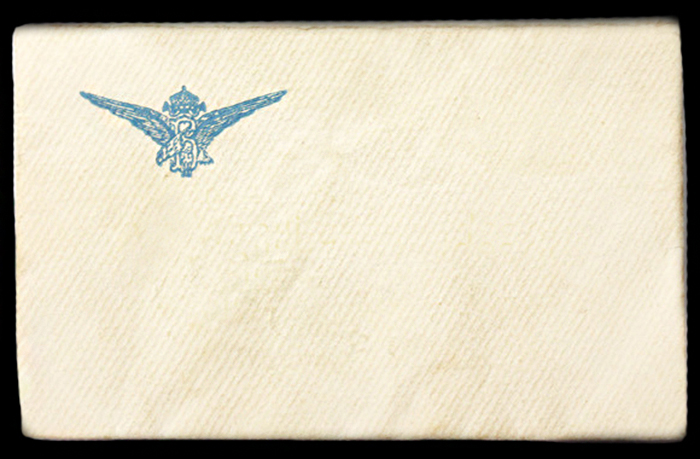
Packet of issue for the Bulgarian made (pin-back) 1st pattern Pilot's Badge
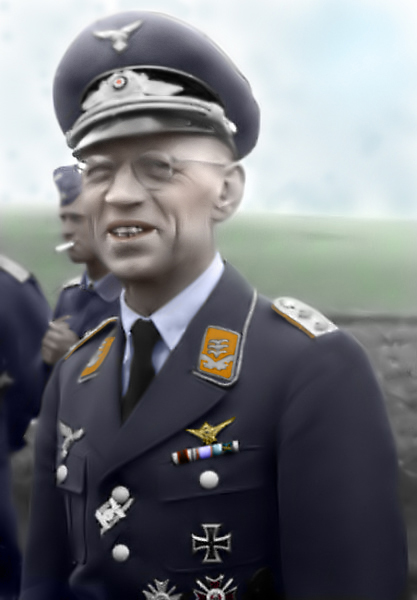
A member of the German Luftwaffe showing the Bulgarian 1st pattern Pilot's Badge in wear
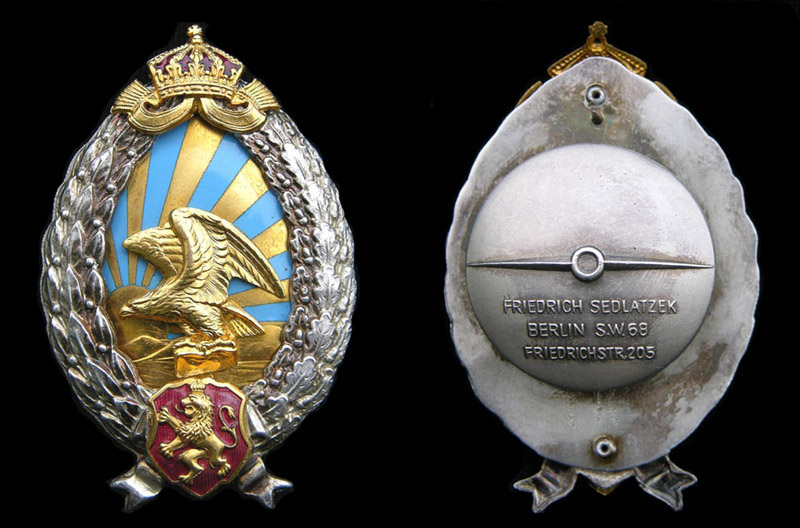
German made Bulgarian Observer's Badge by Friedrich Sedlatzek - Berlin S.W.68
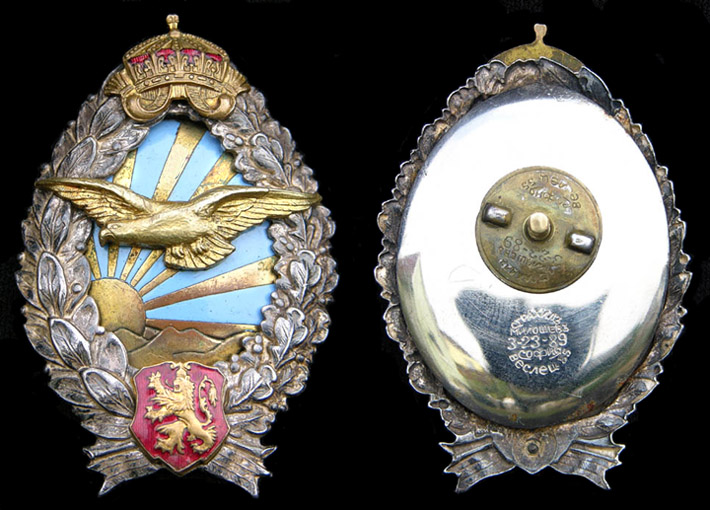
Bulgarian made 2nd pattern Pilot's Badge
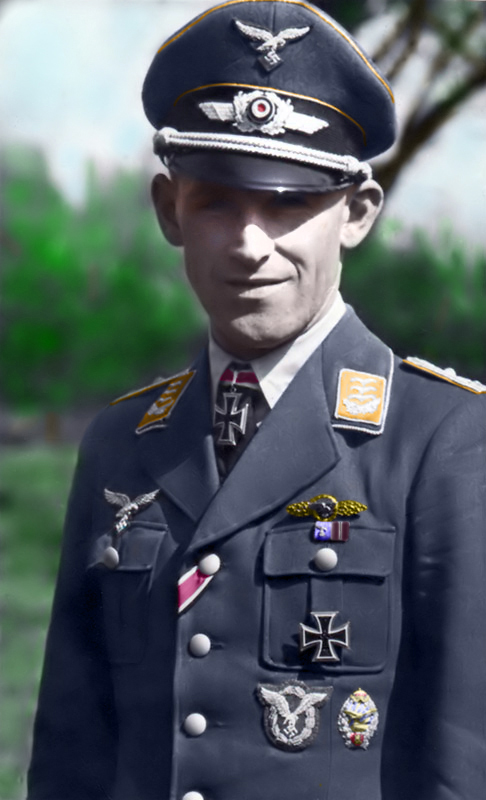
Hauptmann Josef Belz (Transport Pilot: KG z.b.V. 500 -Arado (Ar 232)
showing the Bulgarian 2nd pattern Pilot’s Badge in wear.
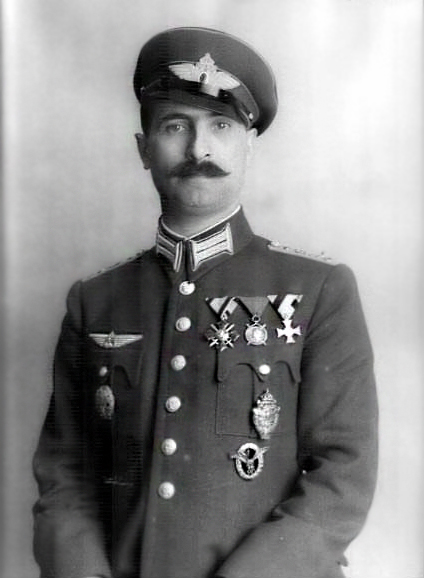
Col. Popganchev of the Bulgarian Airforce seen wearing the Bulgarian WW1 Pilot’s Badge and WW2 German Pilot's badge
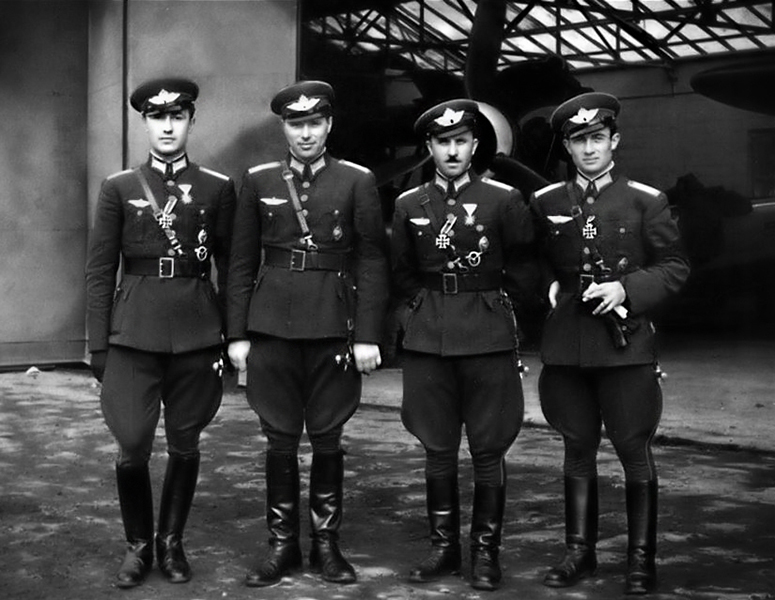
The Bulgarian Airforce Pilots, above, seen wearing both second pattern Bulgarian pilot and German pilot badges + three of the above wearing the Iron Cross 2nd class.
from left to right: Fighter Aces: Lieutenant Petar Bochev, Lieutenant Chudomir Teplodolski, Lieutenant Stoyan Stoyanov, Lieutenant Hristo Krastev.
![]()
Italy
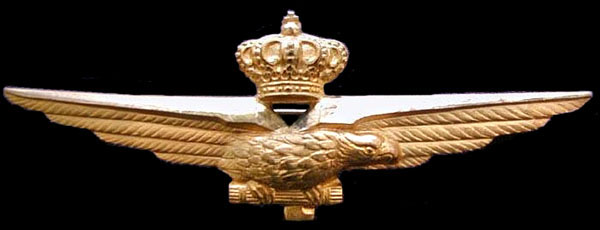
Italian Pilot's Badge
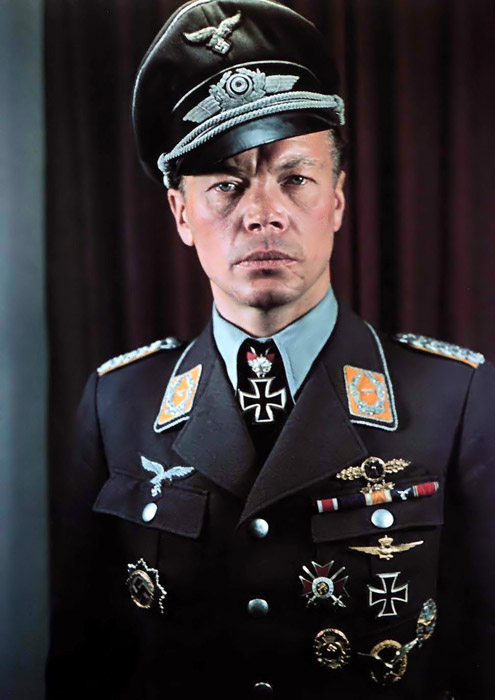
Major Ernst Kupfer (Stuka Pilot) wearing the
Bulgarian and Italian Pilot's Badges
![]()
Croatia
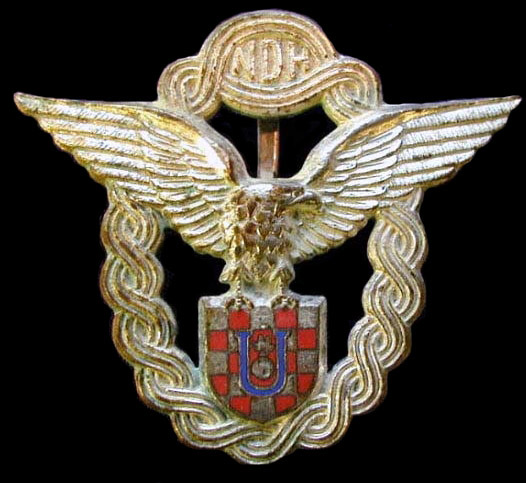
Independent State of Croatia (Nezavisna Država Hrvatska, NDH)
Pilot's Badge
by Braca Knaus - Zagreb
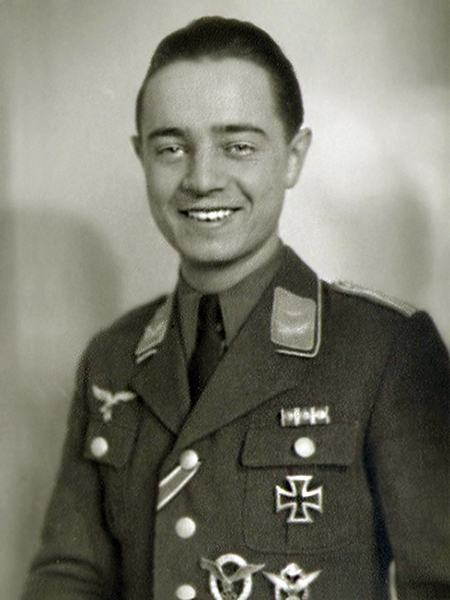
Luftwaffe and Croatian Pilot's Badge in wear
The Croatian Air Force Legion (Croatian: Hrvatska zrakoplovna legija), also known as the 'Croatian Legion' was a military unit of the Air Force of the Independent State of Croatia which fought alongside the Luftwaffe on the Eastern Front. The legion had approximately 360 men.
The unit was sent to Germany for training on July 15, 1941 before heading to the Eastern Front. Its commander was Ivan Mrak. The unit's fighters scored a total of 263 kills while its bombers participated in 1,332 combat missions.
Organization
4th Fighter Wing (Major Franjo Dzal)
10th Fighter Squadron
11th Fighter Squadron
The 4th Fighter Wing was attached to the Jagdgeschwader 52. It originally served as part of the 3./JG 52, while later it became known as the 15 (Kroat.)/JG52. It was led by Franjo Džal.
5th Bomber Wing
12th Bomber Squadron
13th Bomber Squadron
The 5th Bomber Wing was originally attached to Kampfgeschwader 3 as part of the 10/KG3 and later as the 15.(Kroat.)/KG 3.
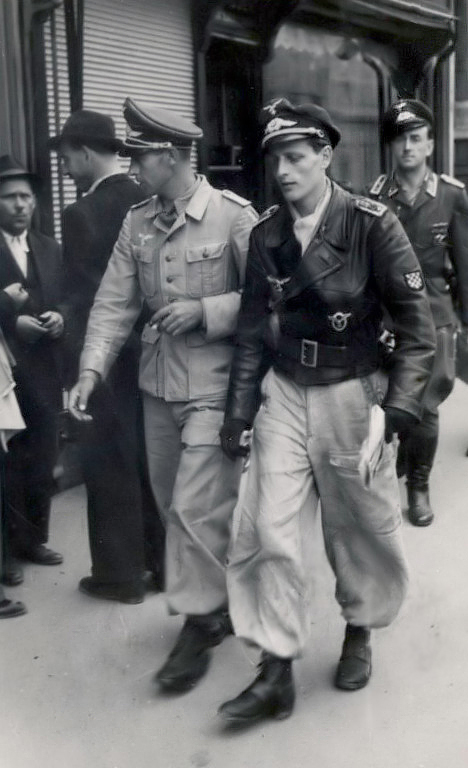
Members of the Croatian Air Force Legion
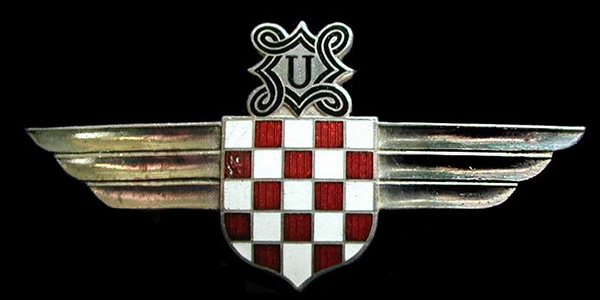
Croatian Air Force Legion Wings
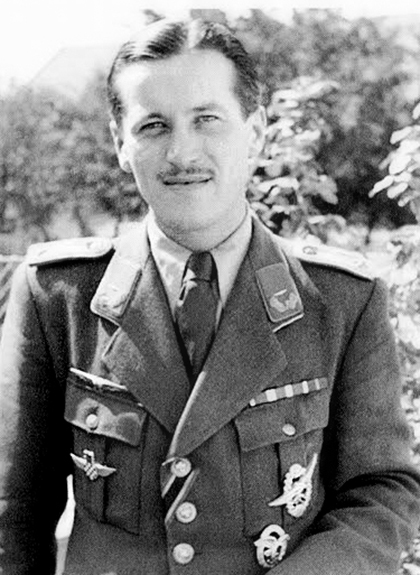
Croatian Air Force Legion Wings in wear
![]()
Romania
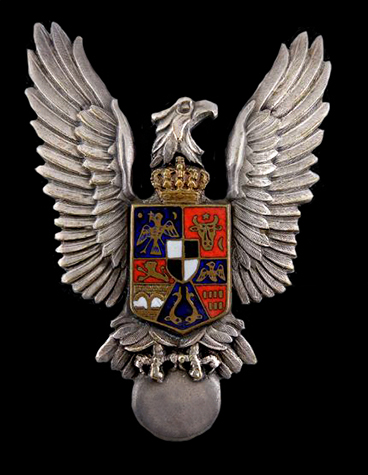
Romanian Pilot's badge
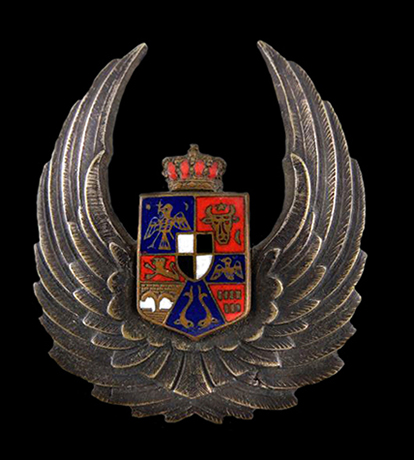
Romanian Observer's Badge
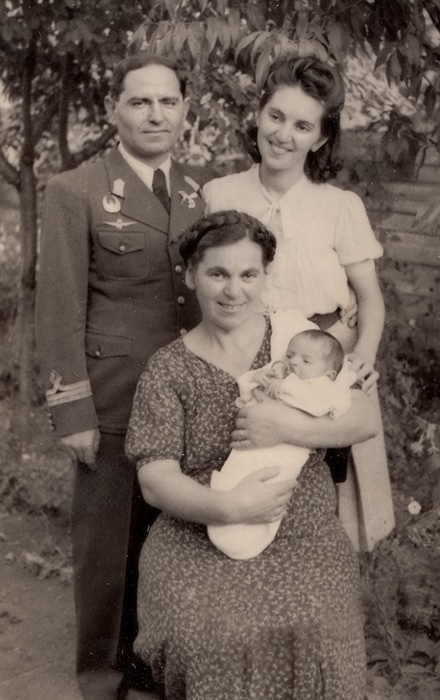
Romanian and Hungarian Observer Badges in wear
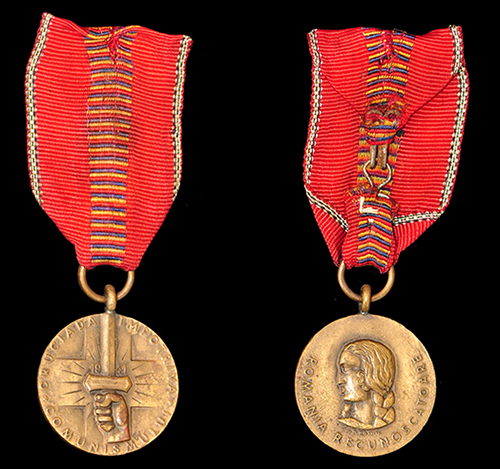
Romanian "Crusade Against Communism" medal
Instituted on April 01, 1942 by the Royal Decree No.1014 of the King Mihai I of Romania. It was awarded to all branches of the Romanian forces irrespective of rank as well as to civilians for combat actions against the Red Army. Romanian allies; Germans, Hungarians, Italians and Slovaks were also decorated with the "Crusade Against Communism" medal.
When awarded to German military personnel it was referred to as "Kriegserinerungsmedaille Kreuzzug gegen den Kommunismus" in Soldbuch entries and other documents.
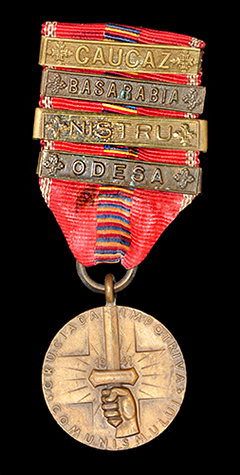
Romanian "Crusade Against Communism" medal with battle bars
Only one battle bar was supposed to be worn at one time, namely that corresponding to the latest battle in which the bearer of the medal had participated.
Nevertheless this regulation was frequently disregarded and frontline soldiers sported several bars attached to the ribbon simultaneously.
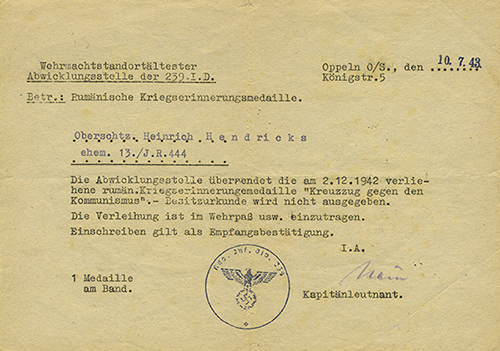
German document for the Romanian "Crusade Against Communism" medal
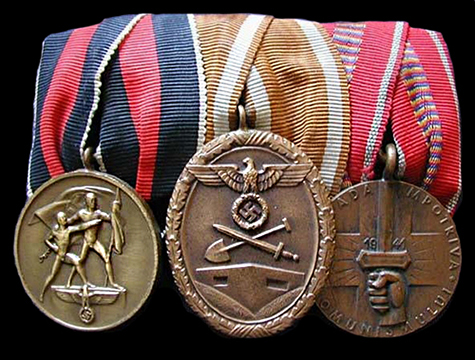
Parade bar with the Romanian "Crusade Against Communism" medal
![]()
Hungary
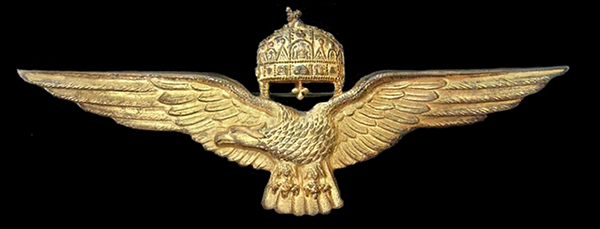
Hungarian Pilot's wings
![]()
Yugoslavia
Although technically an Axis nation, having signed the Tripartite Pact on 25 March 1941, members of the Yugoslav Armed Forces opposed to the move staged a coup d'état, removing Prince Paul and the government from office, taking over the country and installing the then Seventeen-year-old King Peter as head of state. The new Yugoslav government, under General Dušan Simovi, then refused to ratify Yugoslavia's signing of the Tripartite Pact.
These events were viewed with great apprehension in Berlin, and on the same day as the coup Hitler issued "Führer Directive 25" which called for Yugoslavia to be treated as a hostile state, and ordered that Yugoslavia be crushed without delay. The German invasion began on 6 April 1941. Royal Yugoslav Army was thoroughly defeated in less than two weeks and an unconditional surrender of the all Yugoslav troops was signed on 17 April.
After the surrender, Yugoslavia was subsequently divided amongst Germany, Hungary, Italy and Bulgaria, with most of Serbia being occupied by Germany. The Italian-backed Croatian fascist leader Ante Pavelić declared the Independent State of Croatia before the invasion was even over.
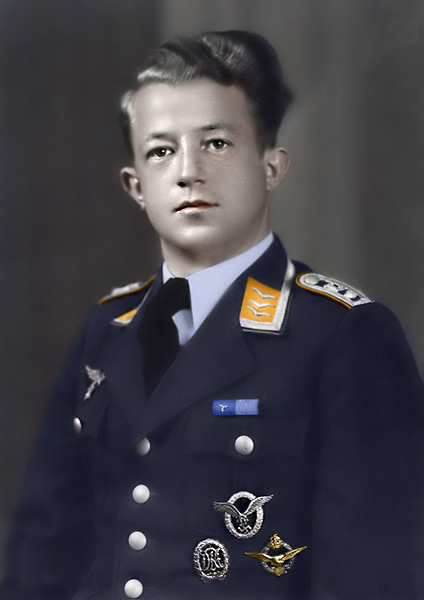
Luftwaffe and Yugoslav Pilot's badges in wear

